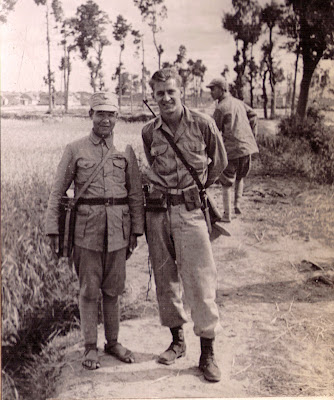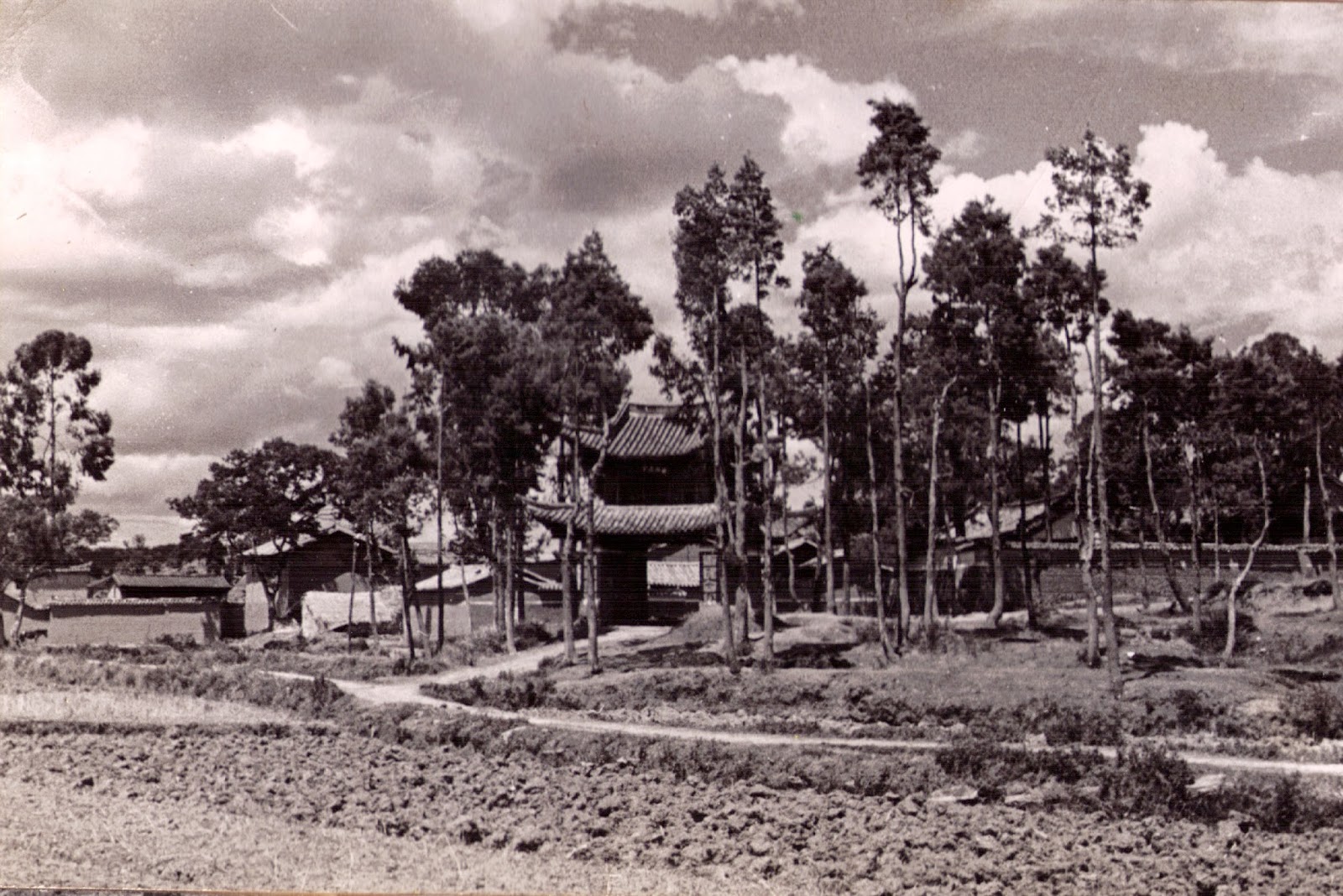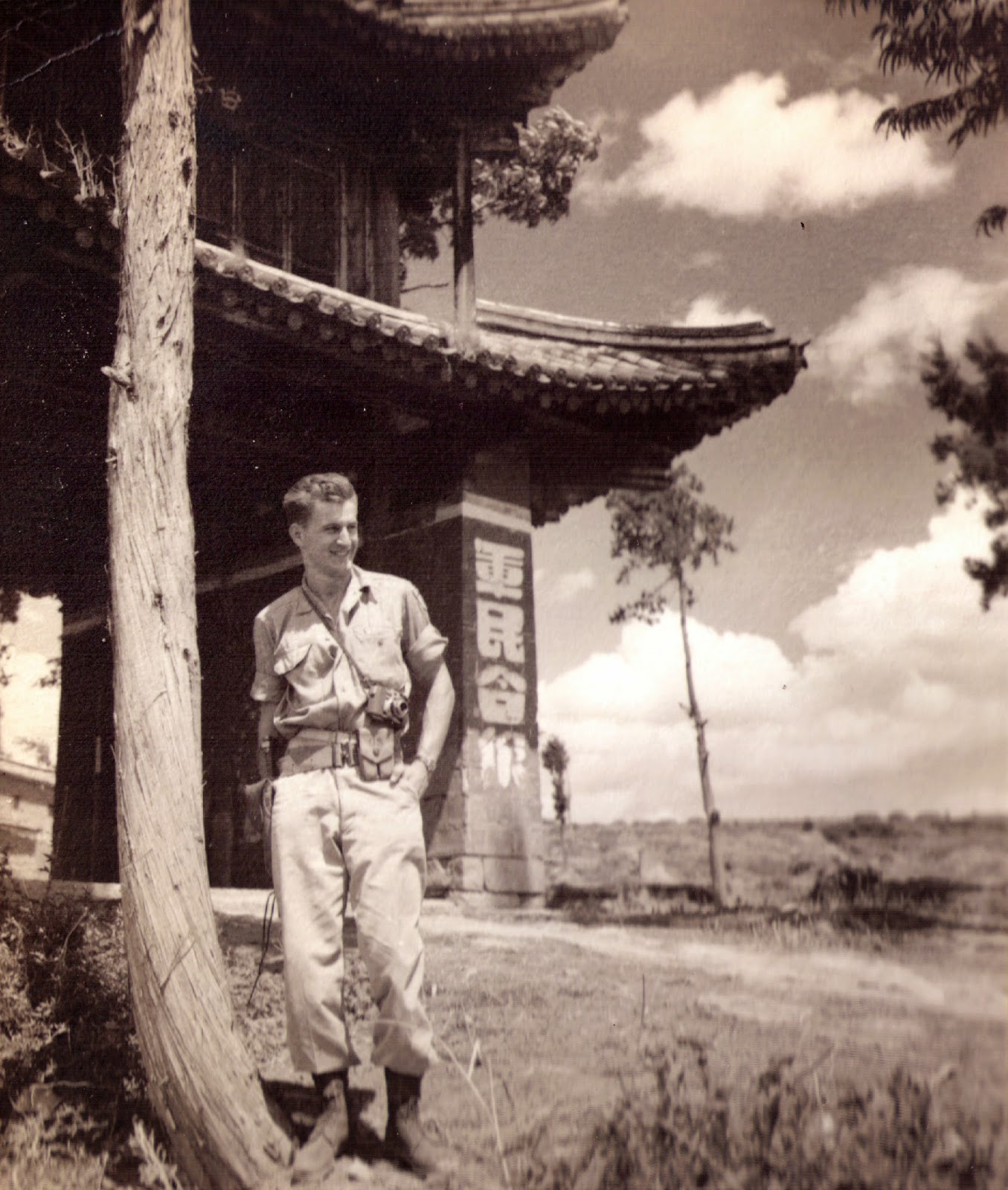"The Chinese Puzzle" is the title of Chapter 8 in the second edition of R.H. Smith, OSS: The Secret History of America's First Central Intelligence Agency. We've considered some quotations from that chapter here in the
Cynicsm post,
the
Warlords post and the
"Chinese Puzzle" post.
In R.H. Smith's "China" folder of materials for his book is a typed letter, 1.5 pages long, dated "Chungking - Nov. 22, 1944. It is unsigned. The salutation is:
Dear Mr. G.
[Chungking at this time was the Nationalist Chinese capital, the city of Generalissimo Chiang Kai-shek, his globally-lethal Secret Police Chief General Tai Li, and their Koumintang Party. In this letter, one "old China hand" is describing the situation to another such, the mysterious Mr. G. An "old China hand" is a European or American, son of diplomatic, academic, religious, or commercial missionaries to China, who spent his youth in the country; for some of them Mandarin or Cantonese was the first language. Smith discusses "old China hands" quite a bit in his Chapter 8, but as far as I can detect on very suspicious close reading, did not quote or paraphrase this letter in it. So although it obviously must have informed Smith's understanding of the situation in China, it has remained mysterious since November 1944. Here is a bit from the first paragraph:]
. . . There is so much that must remain unsaid and such a vast and complex field to cover-and I am so ignorant-that I hardly dare pretend to have anything to say about the China of today. But of one thing I am sure- it is completely and radically different from the Pekin you knew and the life that was lead [sic] there when you were a young man. . .
[Here is a bit from the second paragraph of this letter of mystery. I am looking at a scanned image of a yellowed sheet of typing paper bearing the characteristic grey typescript, output of a partly used-up typewriter ribbon:]
I don't know how to start or to end in describing the scene. Indeed I'm not sure in can be described- that is, it is not consistent; . . . things are so fluid that they don't permit of conclusions as to pattern. . . In the first place the Chinese don't hate the Japanese and never have- they merely hope in some vague way , that the Japs will go away. . . Second, the Chinese have little, if any conception of nationhood. And the Party [the unidentified writer here refers to the Koumintang Party] has not appealed to the love of China, but rather insisted on devotion and loyalty to the Party and its leader- a narrow and limited appeal in any event and particularly sterile in recent years because of the "reactionary", or better, moribund leadership from the Gissimo down. . . Third, the soldier and the army are still the lowest in the social and intellectual scale. there is no conscription; not one of the members of the government has suffered any personal loss of sons or brothers.
[No skin in the game, and on purpose! Contrast even the monarchs of medieval and Renaissance Europe as they went forth themselves, or sent their sons and Crown Princes, forth to battle the foe across the English Channel, for example. Whether their expeditions were defensive in nature, or venal attempts at territorial expansion, they put their own royal houses at stake.]
On the contrary, all have profited hugely and are prosperous beyond their wildest dreams so that the great majority of government people, plus the traders, merchant and business man, doesn't [all caps, X'd over!] want the war to end.
The young Chinese doesn't enlist; he pursues his studies. Only coolies and forced conscripts join the army- they don't join- they are dragged off to a miserable life without enough food or clothing and with miserable quarters, etc.
[So imagine these specifically-trained Americans, come to defeat the Imperialist Japanese who had attacked their own country and also invaded, rampaging and doing murder, this ally China. Some of these Americans descended from the Mayflower colonists, others from refugees crossing the Atlantic in steerage holds only forty years before, others,
Nisei, sons of ethnic Japanese-American parents who loved their adopted country even as it did not yet love them back. They rode, on ponies and trucks, or flew in, to find a thrall-and-warlord based feudal society enmeshed in complicated, opaque, and deadly strategic traps. Their mission was to help these guys fight the Japanese. Okay, but. . . Just imagine it.]
Another point. I said that the Chinese don't hate the Japanese- indeed they don't hate anybody. Someone said here recently that there hasn't been a shot fired in anger by the Chinese since Dec. 8, 1941. He meant merely, the Chinese decided then and there, it was our war and they would let us carry the ball.
[Those are two distinctly different points. Some hate the murderous invader, of course: just remember Nanking. But can they shoot back, or are they disarmed, starving, and powerless? The Chinese who "decided" to "let us carry the ball" are not the ones fighting, they are the ones not fighting, but protecting their localized power and commercial interests.]
- quotations from a letter in the R. Harris Smith papers, Box 2, Folder 1, Hoover Institution Archives.
I wonder who lent the original to our author, R.H. Smith. Below the last paragraph of typescript is a phrase in manuscript. It just says
Please return b 9.9.3.



















